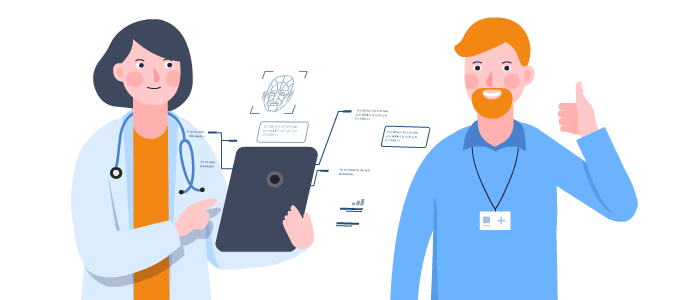How Healthcare Teams Can Ensure Safer Patient Outcomes in Modern Healthcare

Healthcare technology has never been better. Not only are there advancements in the way medicine itself is practiced—these in the form of remote monitoring technology, new and improved methods of robotic-powered surgical instruments, and more—but there are also better tools than ever for handling patient information and making fast, well-informed decisions.
It’s almost surprising in this age of innovation that negative healthcare outcomes exist at all, but for, of course, the most extreme of circumstances. And yet, perfect is a word still never associated with Western healthcare.
How can healthcare teams help improve patient outcomes in the modern age of medicine? Let’s take a look.
Modern Technology That Makes a Big Difference
Before we get into what teams themselves can do, it’s helpful to take a look at what technology is shaping the conversation the most.
While tools that change the patient care side of the experience are valuable, many of the biggest innovations have come through and have changed the logistical side of patient care more than the experiential one.
For example, telehealth makes it possible to have remote consultations, apps like MyChart allow patients to communicate with doctors and nurses in a matter of minutes from their phone, and electronic health records allow hospitals to review the entire health history of patients immediately without the need for physical documents.
How Teams Leverage Technology to Ensure Better Performance
You may be surprised by how many manual touches exist within a typical healthcare flow. Automation and expediency powered by software are very possible in a technological sense, and yet they remain underutilized for lack of training or comprehension.
Many doctors and nurses working today began their careers before even electronic health records were in use, let alone any of the AI or big data–powered tools that are in circulation today. Consequently, they were not taught about these concepts in school.
Hospitals and clinics can help prepare their staff for the advantages of digital technology by hosting regular trainings on the subject.
Innovation within the healthcare context should be conservative but continuous. In other words, hospitals should always be looking for better ways to do things.
But they should also carefully test, research, and weigh any solution carefully before troubling a team of doctors and nurses to learn it.
Simply embracing an attitude of continuous learning is often enough to ensure that the hospital is consistently looking for improvement.
The idea is not to constantly reinvent the idea of healthcare, but to make cautious, well-informed adjustments in response to new developments within the practice.
Technology Isn’t Everything There Is or Ever Will Be
Without question, patient care will remain the most important component of modern healthcare, regardless of what technological innovations are being woven into hospital systems.
Empathetic, patient-led care based on ever-evolving theory is of increasing importance in the world of modern healthcare.
Plans are now more personalized than ever, and patients also have greater access to their own information than they did before.
With electronic record systems, they can see information about their health going back for decades. And with the advent of artificial intelligence and good old-fashioned Google searches, they can research results with more accuracy and clarity than ever before.
Because patients have the ability to be so proactive in their own health, healthcare networks have an enhanced level of responsibility to collaborate with their patients on a deeper level, learn their goals, understand their preferences, and listen to where they’re coming from. Those extra touches make a big difference in the way care is practiced.
For example, some hospitals find very simple ways to enhance the standard of human connection.
Some may have a policy recommendation that sees doctors and nurses sitting eye-level with their patients any time it is at all possible.
Even something as simple as eye contact can add a little more humanity to the practice of health.
The Value of Strong Leadership
One of the biggest influences on patient outcomes today is neither technological nor compassion-oriented. It’s a result of crippling hospital shortages.
The vast majority of healthcare systems across the United States are short at least several nurses and doctors, many considerably more so.
Strong leadership structures, coupled with data-supported employment initiatives, may be an effective way to ensure the long-term health of hospital systems and increase retention numbers across the board.
However, the best data, software, and biotech sensors can only do so much good in a system that is choked by efficiency bottlenecks and dangerously fatigued employees.
Healthcare professionals interested in designing sturdy healthcare architecture may consider the impact of healthcare leadership or administrative degrees on their career trajectories.
While most people don’t imagine a cramped cubicle when envisioning their healthcare career, it’s from this vantage point that some of the highest-impact decision get made. A very busy doctor or nurse might see forty patients in one day.
During that same time, a healthcare leader or administrator might make choices that impact thousands of lives. Skills in public health can help professionals make an enormous difference in the communities that they are serving.
Conclusion
One of the biggest influences on patient outcomes today is neither technological nor compassion-oriented. It’s a result of crippling hospital shortages.
The vast majority of healthcare systems across the United States are short at least several nurses and doctors, many considerably more so.
Strong leadership structures, coupled with data-supported employment initiatives, may be an effective way to ensure the long-term health of hospital systems and increase retention numbers across the board.
However, the best data, software, and biotech sensors can only do so much good in a system that is choked by efficiency bottlenecks and dangerously fatigued employees.





Leave a Reply
Want to join the discussion?Feel free to contribute!